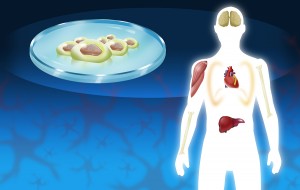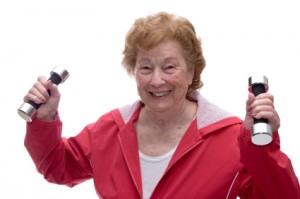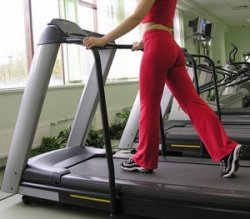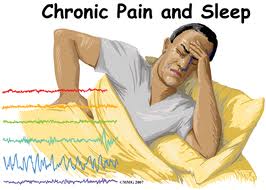You need to appreciate that self-love is important, if you want stable mental health and well-being. Before you can take care of people around you, you need to practice self-love first. You cannot give love, if you don’t love yourself first. We get so busy in working hard, wanting to achieve goals and then surpass ourselves. We want to be perfect. But this is not possible without first looking after our own needs: again, self-love is important to be able to reach the goals you want to achieve.
Perfectionism can be harmful
Most of us were grew up in the Western society thinking that perfectionism would be good for us. After all, we achieve things; we criticize ourselves and improve it even more; so finally we end up with our dream goal. What is the downside of perfectionism?
Perfectionism often comes with chronic stress, which can shorten our life span. Perfectionism leads to diseases like irritable bowel syndrome, fibromyalgia, depression and eating disorders. Depression can have a serious complication, namely suicide attempts and actual suicide. Perfectionists also often suffer from anxiety disorders that can make life miserable. Chronic stress together with perfectionism can weaken the immune system, which in turn can cause infections and even autoimmune diseases.
Moving away from perfectionism
The United Nations passed a resolution in 2012 saying, “pursuit of happiness is a fundamental human goal.”
Psychologists also tell us that happiness is something we deserve to have; it is our right. A clinical psychologist in Vancouver, Canada, compares the inner critic of perfectionists to a “nasty adult beating the crap out of a tiny child”. We don’t have to beat ourselves up internally; it is not healthy for us. Don’t let the inner bully put yourself down for a minor thing that went wrong.
Start cultivating self-compassion. Self-compassion is not something that you have or do not have. According to psychologists self-compassion is something that you can learn.
The more you learn self-compassion, the less important perfectionism will be for you. You will still be productive and successful, but you will stop injuring yourself in the process.
Learning about self-compassion
Psychologists have researched how self-compassion can be developed. They even have invented an 8-week program that helps the client to build up self-compassion. These psychologists could measure a significant improvement of the level of self-compassion before taking the course and after completing it. According to Prof. Neff and associates there are three parts to self-compassion.
- Self-kindness, which means treating yourself with understanding and forgiveness.
- Recognition of one’s place in the shared humanity. This acknowledges that people are not perfect. It also means that personal experiences are part of the larger human experience.
- Mindfulness, which means emotional balance and avoiding over identifying with painful emotions.
Listening to yourself
Dr. Kristin Neff has written a book that describes how to change your inner voice from a harsh voice to a softer, kinder internal voice. By becoming aware what your internal thoughts are, you can gradually change your internal talk. Profs. Neff and Germer have developed an 8-week course called “mindful self-compassion training”. In their own words “Self-compassion says, ‘Be kind to yourself in the midst of suffering and it will change.’ Mindfulness says, ‘Open to suffering with spacious awareness and it will change.'”
Part of the course is to learn how to deal with suffering when things go badly. In this case they recommend to their clients to repeat the following 3 phrases: “This is a moment of suffering,” “Suffering is a part of life,” and “May I be kind to myself.” This will take the sting away from the suffering and reduce the emotional pain.
Doubts about mindful self-compassion training?
You may have some doubts whether or not self-compassion training would work. But psychological tests regarding self-compassion ratings before and after the course have found a significant 43% difference. Similar compassion training can be found under this link.
These mindful exercises in self-compassion have been proven to down regulate the stress response. The hormones ACTH and cortisol in the blood were found to be much less in persons who had undergone self-compassion training. The training also was shown to increase heart rate variability, which is the body’s natural way to react to stress.
Not everybody is a good meditator. But apart from meditating there are other methods to recognize that self-love is important, as is self-compassion. You can write a letter to yourself, but pretend it comes from a close, loving friend. You could also write a letter that you pretend comes from you addressed to a person that you show compassion to.
Yoga to help you realize that self-love is important
Yoga is a great way to re-acquaint you with pleasures you experienced in childhood. Part of a yoga exercise can be “Mindful Eating”. You are simply refocusing your attention to the tastes that you may have taken for granted. Such a technique helps you to listen to yourself, become aware of your needs and train yourself in self-love and self-compassion. One of the top recommended Internet accessible yoga classes was this.
Conclusion
Perfectionism is widespread and is often taught in schools to be desirable. However, we become so good at this that it often turns into self-injurious behavior. We become harsh on ourselves and nothing is good enough to please us. And we expect perfection from people around us. We may even become abusive when they do not measure up to our expectations.
Dr. Kristin Neff has written a book that describes how to change your inner voice from a harsh voice to a softer, kinder internal voice. She also teaches an 8-week course at Harvard University how to develop self-compassion and self-love.
Mindful exercises in self-compassion
Mindful exercises in self-compassion have been proven to down regulate the stress response. It teaches you to deal with suffering when things go badly.
The bottom-line is to find your path away from perfectionism to a feeling of wholeness. And by achieving this we will free the negative energy of harsh and often unjustified criticism to give our best and succeed.











